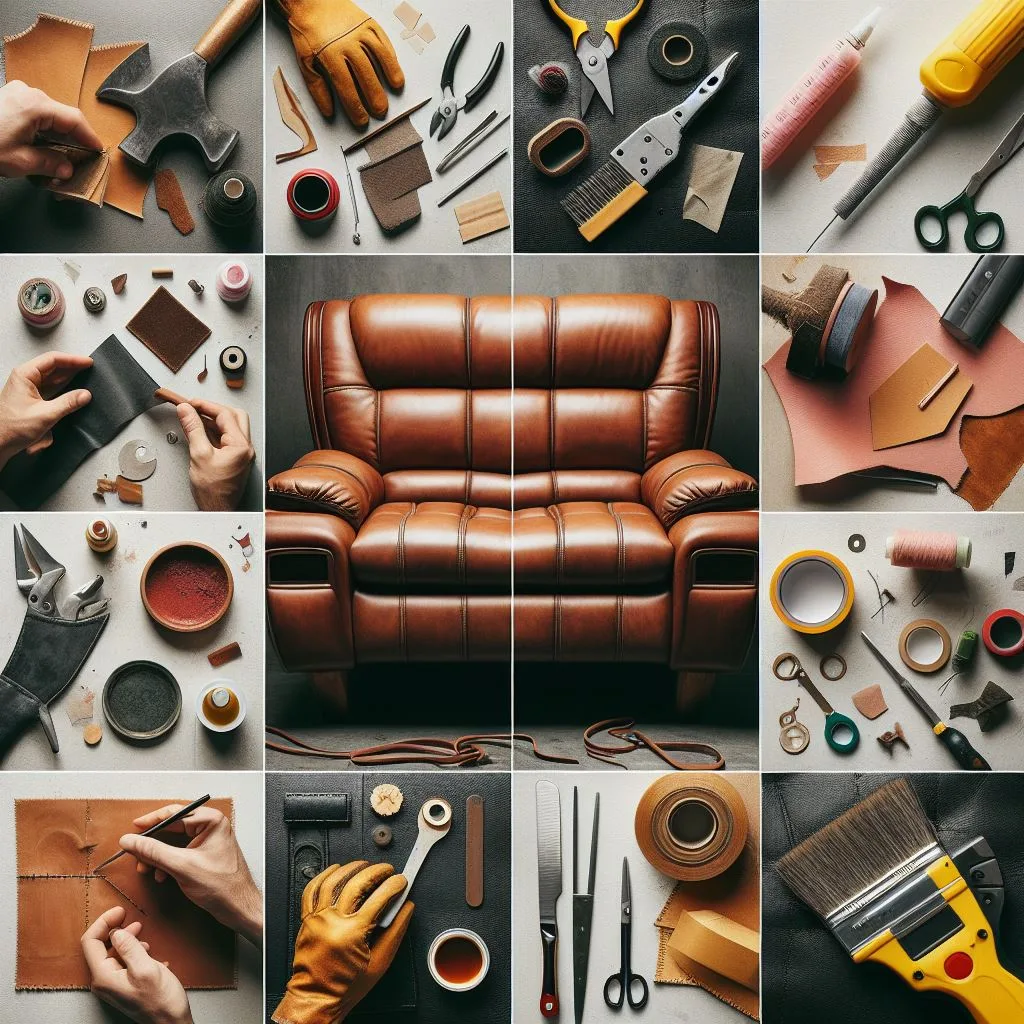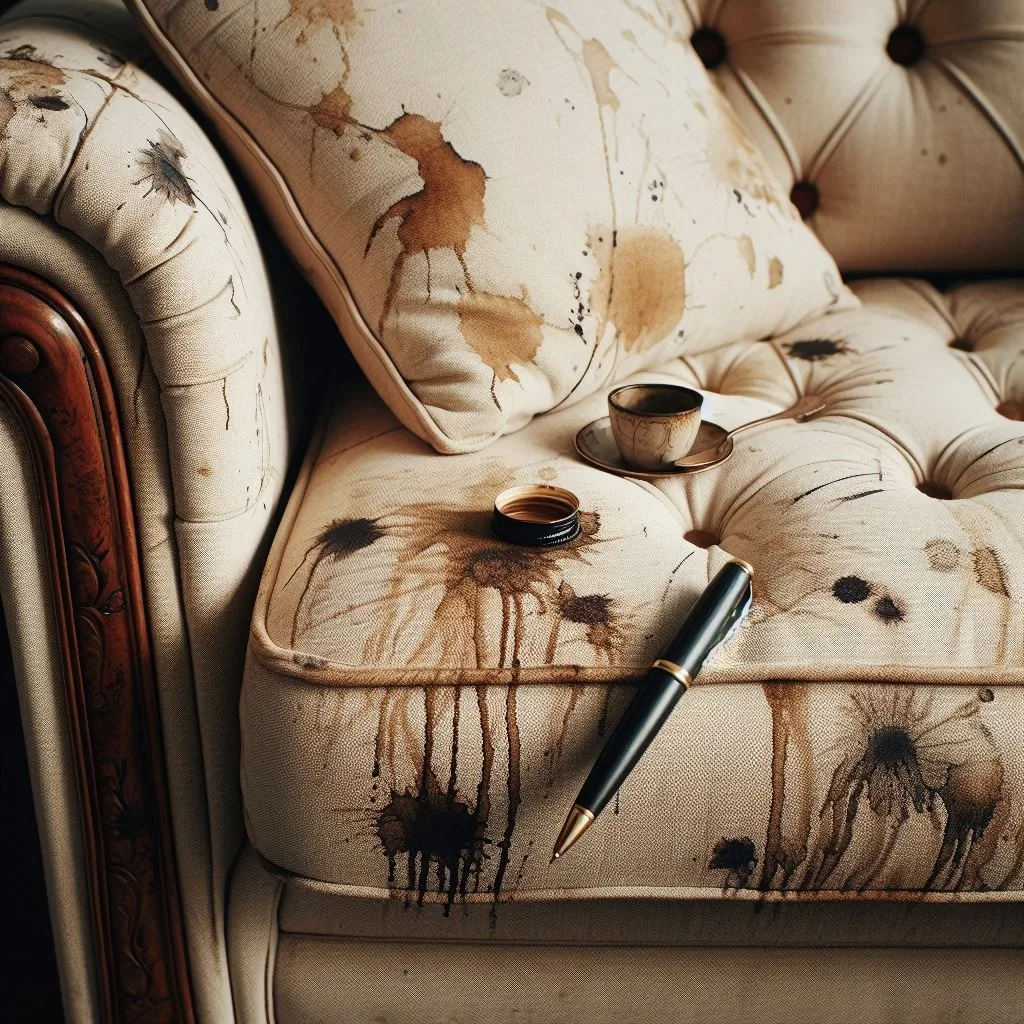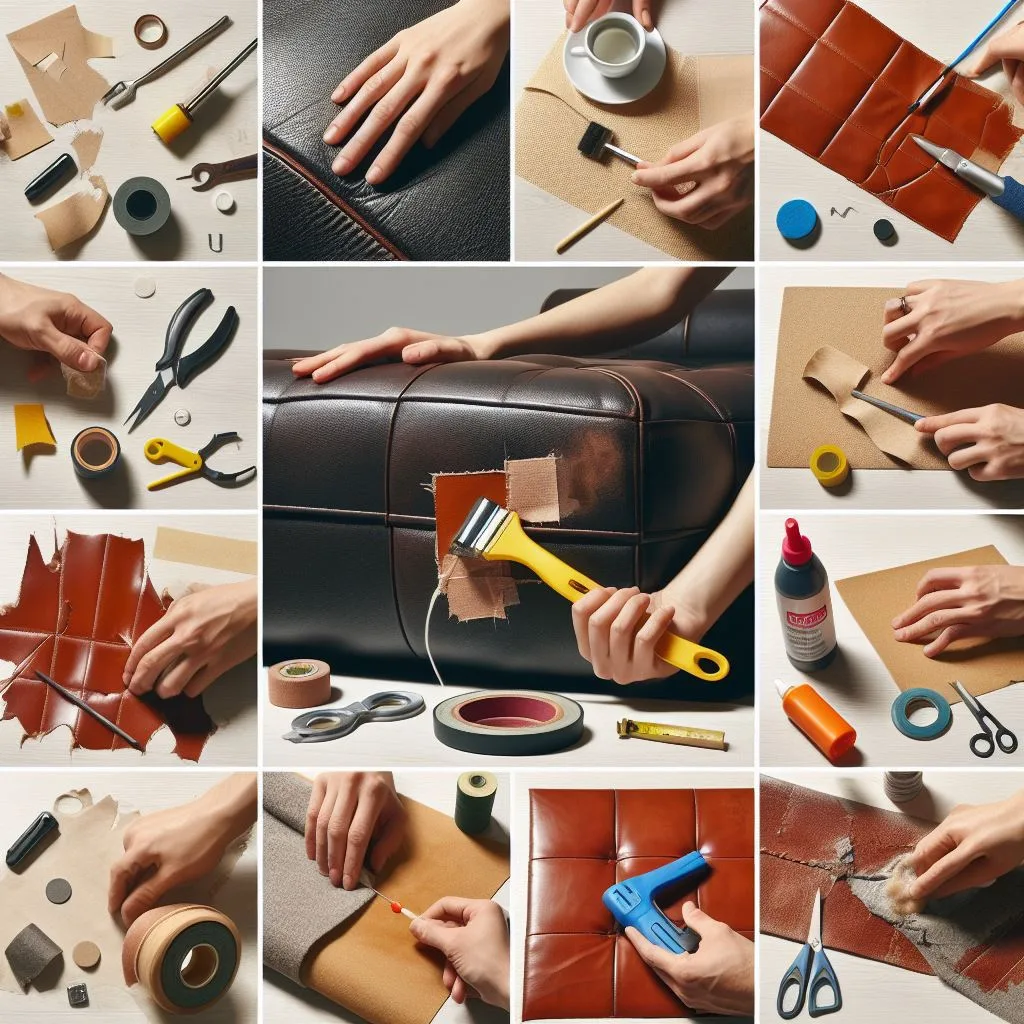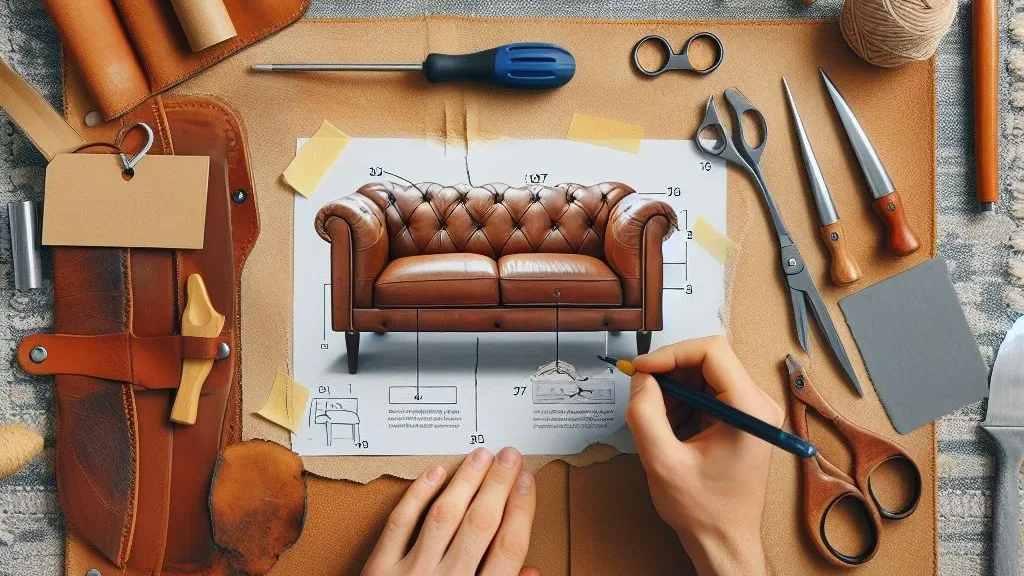Leather couches are a stylish and durable choice for any living space, but over time, they can develop wear and tear that requires repair. In this comprehensive guide “How to Fix Leather Couch“, we’ll cover everything you need to know about fixing common issues with leather couches, from scratches and scuffs to tears and stains. By following these step-by-step instructions and tips, you can restore your leather couch to its former glory and prolong its lifespan.
Understanding Leather Couches
Leather couches come in various types, each with its own characteristics and maintenance needs. Understanding the type of leather used in your couch is crucial for effective repairs. Here’s an overview of the main types:
- Full-Grain Leather: Known for its natural look and durability, full-grain leather is the highest quality and most expensive option. It retains the grain layer, making it resistant to wear and tear.
- Top-Grain Leather: Slightly less expensive than full-grain leather, top-grain leather is also durable and has a more uniform appearance. It is often treated to enhance its appearance and durability.
- Bonded Leather: Made from leftover leather scraps bonded together with polyurethane, bonded leather is a more affordable option. While it resembles genuine leather, it is less durable and prone to peeling and cracking.
Identifying the type of leather used in your couch can be done by examining its texture, smell, and appearance. Full-grain leather will have a natural look and feel, while bonded leather may have a synthetic smell and a more uniform texture.
Common Leather Couch Issues: How to Fix Leather Couch
Leather couches are susceptible to several common issues that can detract from their appearance and comfort. Understanding these issues is key to addressing them effectively:
- Scratches: Surface scratches are common on leather couches and can be caused by pets, sharp objects, or general wear and tear. While minor scratches may add character to the leather over time, deeper scratches can be unsightly and may require repair.
- Scuffs: Scuffs are similar to scratches but are typically shallower and affect the surface finish of the leather. They can be caused by friction or impact with rough surfaces.
- Tears: Tears in leather couches can occur due to sharp objects, excessive force, or aging. Large tears may require professional repair, but smaller tears can often be fixed at home with the right tools and materials.
- Stains: Leather is susceptible to staining from spills, oils, and other substances. Promptly cleaning and treating stains can prevent them from becoming permanent.
Tools and Materials Needed
Before you begin repairing your leather couch, gather the following tools and materials:
- Leather Repair Kit: Choose a kit that matches the color of your couch. It should include a filler compound, colorant, adhesive, and tools for applying the repair materials.
- Leather Cleaner: Use a gentle leather cleaner to remove dirt and grime from the surface of the couch before making repairs.
- Sandpaper: Fine-grit sandpaper can be used to smooth out rough edges or surfaces before applying the repair compound.
- Cloth: A soft cloth is essential for applying cleaner, conditioner, and repair materials to the leather.
- Tweezers: These can be useful for removing debris from scratches or tears before applying the repair compound.
- Scissors: Use scissors to trim any excess repair material or patches.

Repairing Scratches and Scuffs
Minor scratches and scuffs can often be repaired at home using a leather repair kit. Here’s how to do it:
- Clean the Area: Use a leather cleaner to remove dirt and debris from the scratched or scuffed area. Allow it to dry completely.
2. Apply the Filler: Use the filler compound from the repair kit to fill in the scratch or scuff. Apply it in thin layers, allowing each layer to dry before applying the next.
3. Sand the Area: Once the filler is dry, gently sand the area with fine-grit sandpaper to smooth it out. Wipe away any dust with a soft cloth.
4. Apply Colorant: Use the colorant included in the repair kit to match the color of your couch. Apply it in thin layers, allowing each layer to dry before applying the next.
5. Seal the Repair: Apply a sealant or topcoat from the repair kit to protect the repair and blend it with the rest of the leather. Follow the manufacturer’s instructions for best results.

Fixing Tears and Holes
Larger tears and holes in leather couches may require more extensive repair. Here’s how to tackle them:
- Clean the Area: As with scratches and scuffs, clean the area around the tear or hole with a leather cleaner and allow it to dry completely.
2. Prepare the Patch: If your repair kit includes a patch, cut it to size so it covers the entire tear or hole with a little overlap.
3. Apply Adhesive: Apply a small amount of adhesive from the repair kit to the back of the patch and the edges of the tear or hole.
4. Place the Patch: Carefully place the patch over the tear or hole, pressing firmly to ensure it adheres to the leather.
5. Smooth and Blend: Use a soft cloth to smooth out any wrinkles or air bubbles in the patch. If the patch is a different color than your couch, use the colorant from the repair kit to blend it with the surrounding leather.
6. Seal the Repair: Apply a sealant or topcoat to the repaired area to protect it and give it a finished look.

Removing Stains
Stains on leather couches can be stubborn, but with the right approach, many can be removed. Here are some tips:
- Ink Stains: Blot the stain with a clean, dry cloth to absorb as much ink as possible. Avoid rubbing, as this can spread the stain. Use a leather cleaner specifically designed for ink stains, following the manufacturer’s instructions.
- Food and Drink Stains: Blot the stain with a clean, damp cloth to remove excess spillage. Use a leather cleaner or mild soap and water to gently clean the stained area. Avoid using harsh chemicals or abrasive cleaners, as they can damage the leather.
- Oil Stains: Sprinkle cornstarch or baking soda on the stain and let it sit for several hours to absorb the oil. Gently brush off the powder and clean the area with a leather cleaner.

Conditioning and Protecting Leather
Regular conditioning is essential for maintaining the beauty and longevity of your leather couch. Follow these steps to condition and protect your leather:
- Clean the Leather: Use a leather cleaner to remove any dirt, dust, or residue from the surface of the couch. Allow it to dry completely.
2. Apply Conditioner: Using a soft cloth, apply a small amount of leather conditioner to the entire surface of the couch. Work in small sections, rubbing the conditioner in a circular motion.
3. Buff the Leather: Once the conditioner has been applied, use a clean, dry cloth to buff the leather in a circular motion. This will help distribute the conditioner evenly and remove any excess.
4. Repeat as Needed: Depending on the condition of your leather couch, you may need to repeat the conditioning process every few months to keep it looking its best.

Tips for Preventing Future Damage
To keep your leather couch in top condition, follow these tips for preventing future damage:
- Avoid Direct Sunlight: Prolonged exposure to sunlight can cause leather to fade and become brittle. Place your couch away from direct sunlight or use window treatments to block UV rays.
- Use a Leather Protector: Apply a leather protector to your couch to create a barrier against spills and stains. Be sure to test the product on a small, hidden area first to ensure compatibility with your leather.
- Clean Regularly: Regular cleaning with a leather cleaner can prevent dirt and grime from building up and causing damage to the leather.
- Avoid Harsh Chemicals: Harsh cleaning products can strip the natural oils from leather, leading to dryness and cracking. Use gentle cleaners specifically designed for leather.
- Rotate Cushions: If your leather couch has removable cushions, rotate them regularly to prevent uneven wear and tear.

Conclusion
Repairing and maintaining a leather couch requires care and attention, but with the right tools and techniques, you can keep your couch looking great for years to come. By following the steps outlined in this guide “how to fix leather couch“, you can tackle common issues like scratches, tears, and stains with confidence. Remember to always test any cleaning or repair products on a small, hidden area of your couch before applying them to the entire surface. With proper care, your leather couch can remain a beautiful and comfortable centerpiece of your home for years to come.
FAQs:
Can you repair a leather couch?
Yes, you can repair a leather couch. Many minor issues like scratches, scuffs, and small tears can be fixed with a leather repair kit. For more extensive damage, such as large tears or deep stains, professional repair services may be necessary.
How do you fix a peeling leather couch?
To fix a peeling leather couch, start by cleaning the affected area with a leather cleaner to remove dirt and oils. Then, apply a leather adhesive specifically designed for repairing peeling leather. Smooth out the adhesive with a spatula or similar tool and allow it to dry completely. Finish by applying a leather conditioner to restore flexibility and moisture to the repaired area.
How do you restore a leather couch?
To restore a leather couch, begin by cleaning it thoroughly with a leather cleaner to remove dirt and grime. For scratches and minor imperfections, use a leather repair kit to fill in the damaged areas. For deeper cleaning and conditioning, apply a leather conditioner to nourish the leather and restore its natural luster. Regular maintenance with a conditioner will help keep your leather couch looking its best.
How do you fix a worn spot on a leather couch?
To fix a worn spot on a leather couch, start by cleaning the area with a leather cleaner to remove any dirt or oils. Next, apply a leather repair compound that matches the color of your couch to the worn spot. Use a small spatula or similar tool to smooth out the compound and blend it with the surrounding leather. Allow it to dry completely before applying a leather conditioner to restore moisture and flexibility to the repaired area.
Related Article:
Additional Resources:

